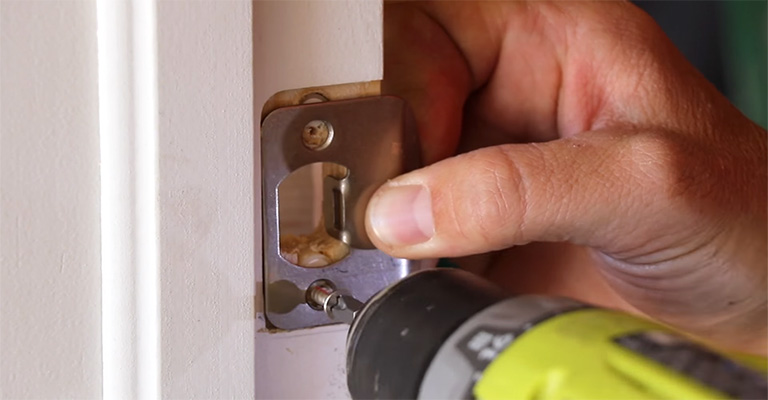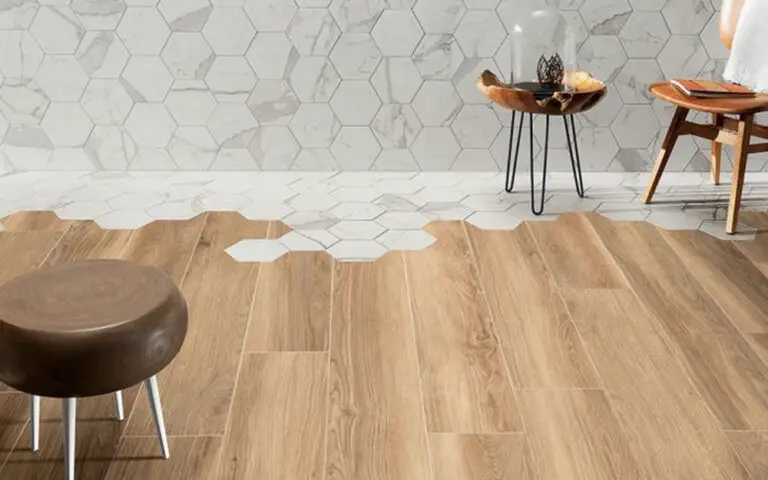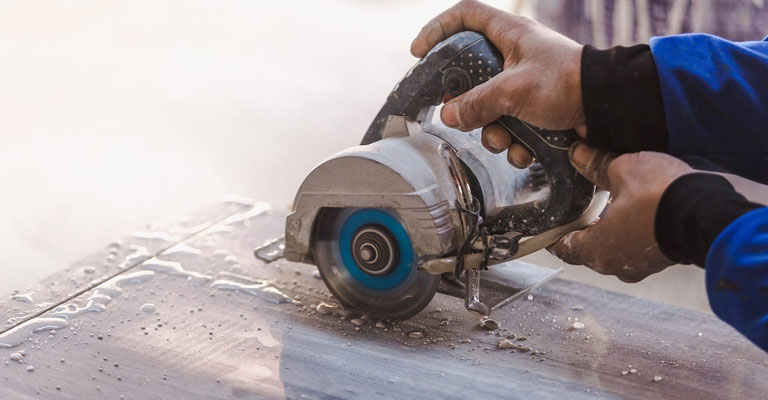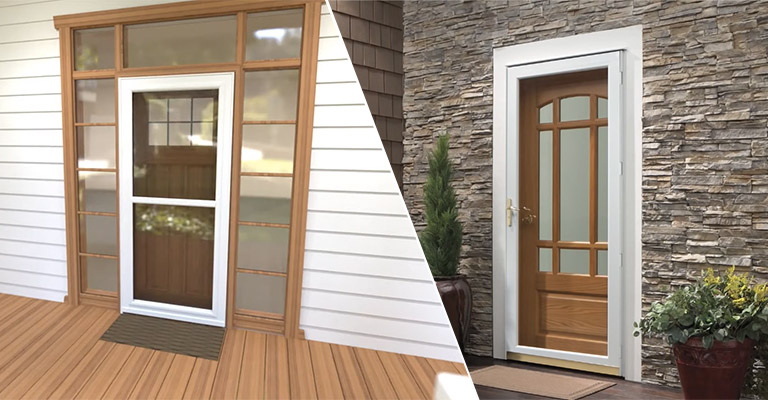Can You Adjust A Strike Plate?
The strike plate is a metal plate that is mounted on the door frame and serves as a stop for the door. It is what allows the door to close tightly. This metal plate also provides protection from burglars who try to force their way in.
If you have a door that is too hard to close, the strike plate might be out of alignment. Now, the question is, can you adjust a strike plate? Yes, you can adjust a strike plate to make a door close better.
Strike plates are often adjustable, so if you have one that sticks out too far from the wall or doesn’t have enough space for your door to close, it can be adjusted. You need to remove the screws that hold it in place and then move it up or down until you find the right height for your door.
What Is A Strike Plate?
Strike plates are used to secure the door lock and the door to the frame. They can be adjusted to fit a variety of door widths.
A strike plate is a metal plate with a hole in it, which is used as a fastener for doors. The hole is typically round or square so that the bolt from the lock can pass through it and be secured on the other side of the door.
The size of these plates will vary depending on what type of lock you’re using (for example, if you’re using a deadbolt, you’ll need a larger hole than if you were using just a doorknob).
You’ll also want to make sure that your strike plate is taller than your doorknob (or whatever else you’re securing it to) so that there’s no chance someone could undo the lock with a paperclip or other object.
Types Of Strike Plates
Strike plates are a very important part of a door or window frame. They are responsible for holding the locking bolt in place and securing the door or window. These plates can be adjusted with a few simple tools, but it is important to know which type of strike plate you have before you start adjusting it.
There are three types of strike plates: horizontal, vertical, and diagonal. Horizontal strike plates are adjusted by loosening the screws on either side of the plate and then tightening them again when they’re in the desired position.
Vertical strike plates can also be adjusted by loosening the screws on either side of the plate, but you will need to make sure that there is enough room for movement before loosening them because if not, they may break when you try to move them.
A diagonal strike plate, also known as a “strike-in” or “strike-through” plate, is a security device that features two overlapping steel plates. The lower plate has beveled edges so it can rest on the ground and is bent at an angle to protect the door jamb.
How To Adjust The Strike Plate On A Home Door?
Strike plates are a very important part of a door, as they provide the first line of defense against intruders. With that being said, it is important to know how to adjust a strike plate, as they often need to be adjusted when moving homes.

These plates should be adjusted so that the door will close properly and securely. If the strike plate is too high or too low, it can cause problems with the locking mechanism and make it difficult for people to walk through or open the door.
Difficulty: Easy
Skill Level: Beginner handyman
Time To Complete: 30 minutes
Things Needed: Hammer, chisel, screwdriver, sandpaper, some spackling compound, and touch-up paint.
Step 1
Mark the bolt with chalk. Observe the mark on the strike plate after closing the door. Using this information, you can determine what direction and how much adjustment you need.
Step 2
Disconnect the strike plate by unscrewing it. First, remove the top screw, then remove the bottom screw. Mark the point on the jamb by measuring from the strike plate how far the opening needs to be adjusted.
Step 3
The strike plate may need to be mortised again if necessary. Then, using the mark you transferred from the strike plate as a guide, route out the hole to fit the bolt properly. The opening can be smoothed with a utility knife or sandpaper if needed.
Step 4
You can fill these exposed holes with wood putty, let it dry, and then sand them down if there are unused holes when you reposition the strike plate.
Step 5
The strike plate should be taped into place. To close the door, remove the bolt from the latch. If the door catches on the strike plate, make sure that it closes smoothly. It is recommended to adjust the mortise beneath the strike plate if this occurs.
Step 6
Tape the strike plate with temporary tape. Be sure that the bolt fits properly into the center of the hole after you replace the bolt into the latch. Once again, another weather change could cause the bolt to become misaligned again, so make sure the plate and hole size is adjusted so that the bolt hits near the center.
Mark the plate with chalk again if it remains misaligned, so you can see where the problem is. Make the hole more ream able by using a round file, utility knife, or drill to ream it until the bolt hits the center.
Step 7
Once all necessary adjustments have been made, you can now open the door. The first step is to install the screws underneath the strike plate. The screws should not be completely tightened. Once the screws are installed, remove the strike plate. Reinstall the strike plates and tighten them.
Make sure everything is aligned by opening and closing the door several times. Despite the fact that strike plates need periodic readjustments and realignments, they are an integral part of a door lock assembly.
Tips For Moving The Strike Plate
Removing the strike plate and chiseling out the mortise will be required to move it any significant distance. Take out the strike plate using the screwdriver. Create an outline of the location on the jamb with a sharp pencil.
The wood can be trimmed out with a sharp chisel up until the line. Moving it a little will cause the screw holes to line up incorrectly. It might be necessary to whittle an extra filler pin and glue it in place.
The screws will then have a place to grab when they are inserted. They will otherwise want to go back into their original place. Trimming the pins off with the chisel after the glue has dried will allow you to install the strike plate.
The mortise, where the strike sits, may have to be trimmed based on which way the strike was moved. Ideally, the strike plate should be properly positioned so that the door lock works.
Final Words
Adjusting a door strike plate is a straightforward task that can significantly improve the function of your door latches. The process begins with examining the alignment of the door latch with the strike plate on the door frame. If the door latch is not catching properly, it might be necessary to adjust strike plates slightly. This can be achieved by loosening the screws and realigning the plate so that the latch hole perfectly accommodates the door latch. For a more precise adjustment, a metal file can be used to enlarge the latch hole on the striker plate, ensuring a smooth glide of the door latch into its designated position.
When the alignment issue requires moving the strike plate vertically or horizontally, drilling pilot holes is an essential step to prevent splitting the wood and to secure the plate firmly in its new location. It’s advisable to use longer screws when attaching the strike plate in its new position, as they provide added strength and stability to the door mechanism. This is particularly useful if the old screw holes are worn out or enlarged, ensuring that the door strike plate is securely fastened. Adjusting a door strike plate not only enhances the functionality of your door latches but also extends the lifespan of your door hardware by ensuring proper alignment and operation.
You might need the best lubricants for your door lock for your projects.






